20 November 2019
Italians don’t shine for punctuality, but it’s not always a flaw: for example, late harvests yield pleasantly sweet wines. The Grand Wine Tour has chosen the best wineries where these can be tasted and discovered.
When a bottle is labelled vendemmia tardiva (late harvest), it contains a wine made with grapes left on the vine after maturation: before being harvested, the grapes are left to wither for two to eight weeks.
This method increases sugar concentration, producing wines that are sweeter and with greater alcohol content, less acidic but with a more intense flavour: passito wines.
The vendemmia tardiva is a recent trend in the Italian tradition; a more common method used is that of drying the grapes after harvesting them. Here are five labels chosen from wineries that offer the best hospitality services: the right place to listen to the story of the particular process that brings these wines to life.
Tenuta San Basso, Terre di Offida Passerina Passito DOC
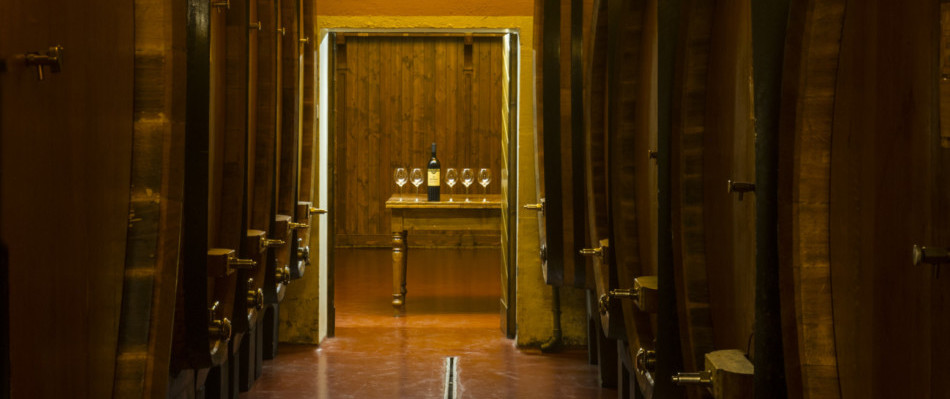 Inside Tenuta Cocci Grifoni
Inside Tenuta Cocci Grifoni
Tenuta Cocci Grifoni’s passito wine is produced in only 2,000 bottles every year, using a local variety from the province of Ascoli Piceno: the Passerina.
Withering takes place on the vine, using a rare technique in Italy. In September, a portion of the vine where the grapes are perched on is cut and the leaves that shade them from the sun are removed, in order to dry the bunch. The grapes are then harvested during the first half of November.
The vineyards of Tenuta Cocci Grifoni, near the medieval villages of Ripatransone, Grottammare and Cossignano – on the south of the Marche region – are surrounded by canyons and by uncontaminated forests that create a precious ecosystem, filled with animals and rare plant species, spreading over a hundred hectares.
The old family house, located next to the cellar and the panoramic terrace of the Tenuta, has become a residence dedicated to welcoming guests: come and visit the winery to taste wines and other local specialties.
Aphrodisium, Lazio IGT passito
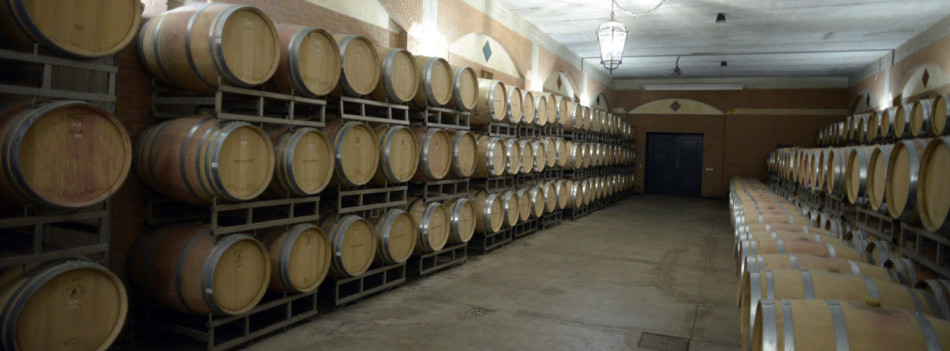 The cooper of Casale del Giglio
The cooper of Casale del Giglio
Casale del Giglio’s Aphrodisium is a blend of Petit Manseng, Viognier, Greco and Fiano – grapes all grown in the area of Agro Pontino, in the region of Lazio.
The “vendemmia tardiva” for this passito occurs in different periods, depending on the grape variety, lasting until the end of October for the Petit Manseng: the grapes are dried by the sea breeze and they are then lightly pressed, extracting only thirty litres for every hundred kilograms of grapes.
The name of this passito is an ode to the temple – which used to stand here almost two thousand years ago – of “Aphrodite Marina”, patron goddess of sailors. In the middle of the vineyards of Casale del Giglio’s estate, there are still some archaeological excavations to visit.
The tour is a sip of ancient history, to be paired with shortbread pastries or homemade fruit tarts.
Arcass, vendemmia tardiva VDT
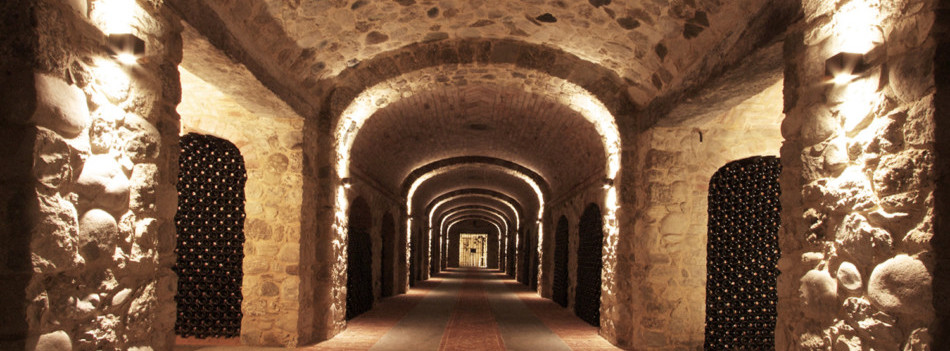 Cascina Chicco’s captivating underground cellar
Cascina Chicco’s captivating underground cellar
There is a wine in Italy which is sometimes called “the white Barolo”: it is the Arneis. A winery in Piedmont that understands Barolo – Cascina Chicco – produces a special and award-winning passito with this grape.
During harvest season in mid-September, four or five bunches for each vine are chosen to continue their maturation until late October; belatedly harvested, they will keep on withering in the cellar until December; lastly, the wine will age for a year in wooden barriques.
The name “Arcass” also has a story to tell: the term indicates an athletic move of a traditional sport in these hills, commonly called “pallone elastico” or “pallapugno”. “Arcass” is a move aimed at throwing back the ball to the opposing team’s field: a gesture expressing the unyielding country pride, and its people’s ability to bounce back after any kind of difficulty.
So, is there anything better than a tour of the estate – also equipped with one of the most spectacular underground cellars of the area – where you can taste Arcass along with spiced chocolates and dry biscuits, and then watch a pallapugno match, a part of the local tradition as much as wines and truffles?
Colle del re, Albana di Romagna DOCG passito
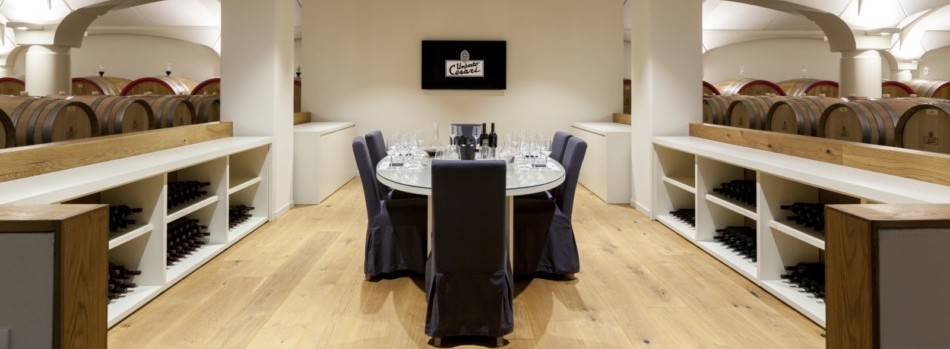 Umberto Cesari’s tasting room
Umberto Cesari’s tasting room
Umberto Cesari makes an excellent passito using Albana grapes. It is produced with grapes harvested during a “vendemmia tardiva”, which are further dried in a storage and then aged in barriques for two years.
The Albana di Romagna is a very refined wine: it was the first white wine to receive a DOCG label in Italy, in 1987. Colle del Re passito knowingly brings out the flavour of this wine and speaks of the places where this wine is produced: unsurprisingly, it bears the name of one of the hills where the winery’s vineyards are located.
The landscapes outlined by the vine rows, the cellars where the bottles are kept, the silence filled with promises of the cooper of the Cesari winery are the best places to enjoy wines from Emilia-Romagna, together with experts during the visit to the most iconic locations of the winery and the wine tasting activities. An experience definitely not to be missed!
Serelle, Vin Santo del Chianti DOC
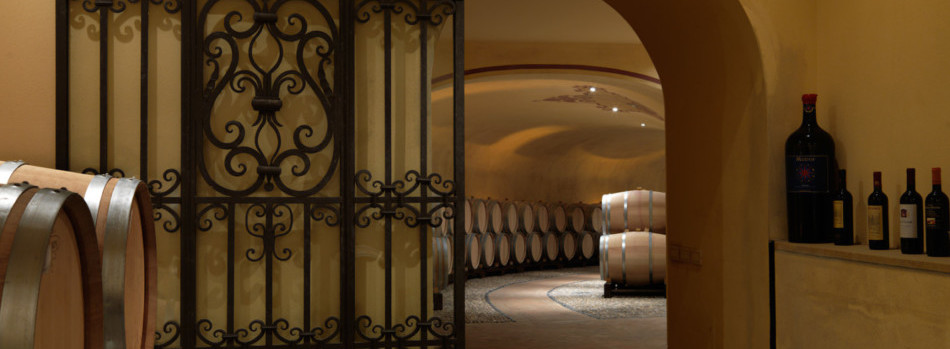 Poggio Casciano Estate: where you can taste Ruffino wines
Poggio Casciano Estate: where you can taste Ruffino wines
During the Middle Ages, the “Vino Santo” has always had a place of honour in Tuscany. There are plenty of stories about the origin of the name: the most famous one speaks of a friar in the Fourteenth century who used to bring the wine used during mass to the sick, confiding in its therapeutic and miraculous power.
Ruffino’s Serelle was first produced in 1988. The grapes used are from vineyards of the Gretole Estate, in the Chianti area. In order to reach the perfect stage of maturation, the grapes are not harvested in one go, but gradually and continuously, between September and late October.
Hanging on a “vinsantaia”, the grapes are slowly dried until the beginning of December, then only the best grapes are chosen and processed. After undergoing pressing, the wine ages in oak barrels for about three years.
The “Vin Santo” from Chianti perfectly goes with cantucci (biscuits) from Prato. The place where you can try this is, of course, Ruffino’s resort, located on the majestic hills between Siena and Florence.
Book your custom-made wine experience of a vendemmia tardiva with The Grand Wine Tour.
